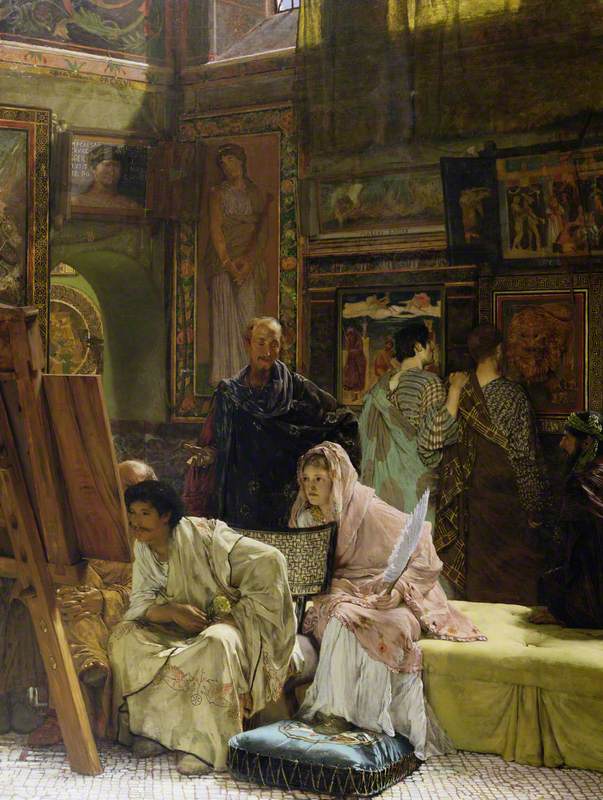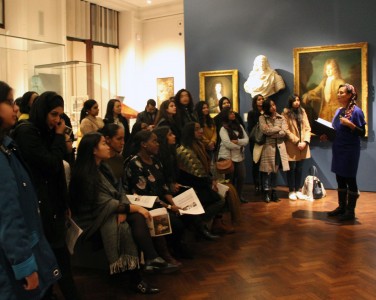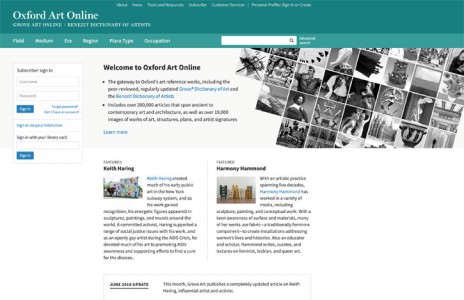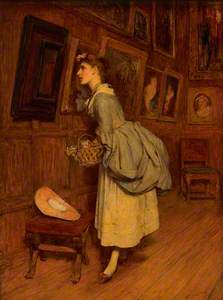Visiting an art gallery can be fun, stimulating and thought-provoking. However, it can also be perplexing and alienating, making you feel unsure about what you are looking at.
Regardless of whether you feel this is because there is too much or not enough information available, the layout of the artwork (or building) is intimidating, or that you need more guidance on how to approach art, everyone should be able to enjoy a gallery trip. It should be a positive experience that is defined by your own interests, but also your willingness to be pleasantly surprised and guided out of your comfort zone. Following some, or all, of the steps below will help to give you a working framework with which to approach art in a discerning way and make your trip to an art gallery enjoyable.
1. Go with a friend
Most things are more memorable and fun if you do them with other people. Gallery trips are no exception, although it is best to choose someone who will go round at a similar pace to you. Having discussions about the artworks with a friend will help you think about what you are looking at more deeply. It may also make you notice details you might otherwise overlook on your own.
2. Be selective
This is the greatest secret for a successful visit to an art gallery, particularly when going to places with large permanent collections or expansive temporary exhibitions. Instead of trying to see everything and feeling overloaded, focus on a theme, historical period, artist or technique that interests you and use it to make connections between certain artworks. This way, you can set up a personalised ‘trail’ and walk round the gallery with purpose. Looking at the gallery’s room maps before starting will help to get an initial overview and find a focus.
In addition, look up the venue on Art UK to find out more about the gallery and its art collection before your visit. There are now over 3,000 collections on Art UK, featuring oil, acrylic and tempera paintings, and drawings, watercolours, prints and sculpture. Furthermore, galleries that are partners with Art UK may also have information about their current or forthcoming exhibitions listed here too.

Image credit: Museums & Galleries Edinburgh – City of Edinburgh Council
William Quiller Orchardson (1832–1910)
Museums & Galleries Edinburgh – City of Edinburgh Council3. Create a story
Make yourself stop in front of individual artworks. Then, gather together ideas and information that create interesting stories about the piece. This will help you look at the art in an active and engaged frame of mind. Think about:
- The subject: Describe what you see. This includes the scene, people, colours and/or shapes depicted and how they are arranged into a composition.
- The techniques: What are the materials and how are they used? What is the brushwork like (thick, heavy, layered, etc) and what effects does this create? How is perspective created or made use of in a painting? How does the lighting work and how does this contribute to the atmosphere?
- The artist: Who were they? At what point in their lives did they make this work? Why might they have made it? What might they want to reveal to the viewer or make the viewer feel?
- The context: When was the art made? Who might the patron have been? What was it made for? What social and/or historical agenda might it be a part of or responding to?
- The success of the work: Depending on the work’s subject and your answers to the previous categories, decide whether you find the art compelling, powerful, beautiful, moving, entertaining, suggestive, illustrative, experimental, educational, or anything else that might be appropriate. Does it work for you? Does it do what the artist and/or institution claim it does? You do not have to like everything you see, and sometimes thinking about why a piece of art does not convince you can be productive for forming your own opinions and knowledge about art. Art is in galleries for us to enjoy, but it can also be something to think with, and to think about critically.
- Search the stories of others: Art UK has an ever-expanding section of stories where a variety of writers, museum professionals and creative people share their ideas and knowledge about artists and artworks. This can be a good place to start, not only to learn about other artists/artworks, but also to see how others create and build up stories about art.
4. Make use of digital devices
- Invest in an audio guide. Listening to information frees up more time to look at the art and diminishes the time reading wall texts. This, therefore, allows for a more direct engagement with art. Audio guides can also offer opportunities to hear from curators, or artists themselves, and allow you to concentrate on certain themes.
- Download an app. Some galleries and institutions also have (often free) apps that you can download and use to interact with the collections online.
- Browse the gallery’s website. Some galleries have extensive information about artists, periods and research on their website. With many places now offering free Wi-Fi onsite, there is no excuse not to access this information in situ and use it to enrich your visit.
- Search Art UK. This website will also enrich your visit – it allows you not only to search for artworks by venue and collection as previously mentioned, but also to search by artist, artistic movement, topic, geographical location, etc. This means that if you spot a particular artist or work that you like during your gallery visit, you can quickly and easily search Art UK to find out about other related works, perhaps in other collections, and gain a quick overview. This will give context to the individual paintings you see during your visit and may inspire further trips to other locations.
- Write virtual notes. Art UK allows registered users to add notes (that only you can see) to individual artworks and saves all annotated pieces into your own customised folder. This means you can record ideas as you go and easily find them all in one place later on. This can be a neater method than writing in a notebook as it enables you to see an image of the work alongside your notes, as well as allowing you rework ideas at a later date.
5. Go on a guided tour
Lots of galleries offer informal guided tours, many of which are free to attend and do not need to be booked in advance. This is a lively way to gain an overview of the displays and follow a theme. Listening to someone else speak about art can be much more engaging than reading wall texts by yourself or even listening to an audio guide.
6. Do a family activity trail
This can be a great way to make children feel included within galleries and encourage them to look at artworks for a prolonged length of time. Many galleries now have activity trails and are equipped with colouring pencils, stickers or collage to fuel children’s creative responses to art.
7. Take photographs for your own private use
Many galleries do allow you to take non-flash photographs of art for private use. However, always check before doing so, as sometimes it will not be allowed for various reasons including conservation, copyright and legal protection of loans. The act of taking a photograph can make the subject more memorable and make you look at it more closely. Once home, turning a selection of your photographs into a collage, using an appropriate app, can be a nice personal reminder of your trip. Alternatively, many of the artworks will have been digitised and added to Art UK, so you can also enjoy looking at professional images on this website. Registered users can save searches, create albums and group favourite works together, so you can easily keep a record of what stood out for you during your gallery visit.
(NB Taking photographs of artwork for reasons other than private use can result in a breach of copyright and is against the law.)
8. Pick up some postcards
Similar to photographs, postcards can be a good reminder of your favourite artworks. They are also physical souvenirs: postcards can be sent to friends to continue conversations about art, or used as bookmarks. Wherever they end up, they bring the artwork into different contexts and parts of your life.
9. Enter into conversations in the café
Enjoying a coffee and slice of cake in the gallery café can be a pleasant experience in itself. Gallery cafes, however, can also be perfect places for overhearing or joining in conversations about the art on display. Here is the opportunity to find out more, and reflect on what you have just seen.
10. Read reviews and articles
Ideally, reviews should be read after your trip so that you have the opportunity to make up your own mind first. It can then be fun to compare your opinions to that of a critic and explore why you have come to certain conclusions.
11. Summarise the art and your experience of seeing it
Think of three words that summarise your impressions of the art you have seen. This should be a considered response, acknowledging the information you gathered and feeling you experienced during your visit. Deciding on these words will help you connect with what you have seen, consolidate how you feel about it and make your visit memorable.
Challenge: Go to a gallery if you haven’t been in a while, or go with someone who wouldn’t normally attend a gallery, and follow a few of the tips mentioned above. What do you think, what are your feelings? What artwork made you stop and reflect? Were you surprised by what you found?
Art UK would love to hear about your experiences and responses to the art when you next go to a gallery and follow some of the tips here. Let us know on social media using the hashtag #visit_art
Helen Cobby, Research Curator, Leamington Spa Art Gallery and Museum, and independent art critic
Helen keeps a blog (www.helencobby.wordpress.com) and can also be found on Twitter (@HelenCobby).

























